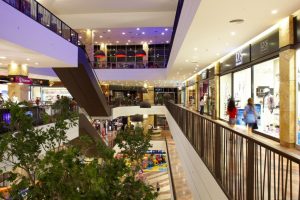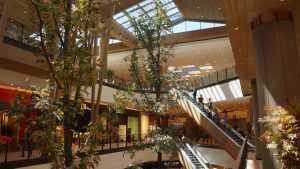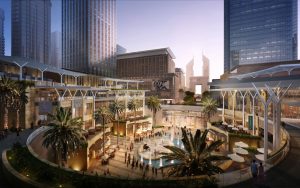While recent headlines have sounded the death knell for the traditional mall, don’t count the indoor shopping center out just yet.
Michael Ellis, director of international architectural firm 5+design (Los Angeles), says that “Despite the Internet, despite the swing of the pendulum toward outdoor shopping environments, the [mall] is not becoming extinct. However, the U.S. model of the enclosed, very inward-oriented shopping experience is fading. Many malls will survive, but they will have to be repositioned.”
U.S. developers would do well, says Ellis, to take a cue from projects overseas. One such idea – the combining of retail with cultural attractions – comes from Shanghai, where the K11 center functions as both a shopping destination and gallery/museum. Dubbed the “art mall,” K11 features permanent exhibits and temporary shows, such as a recent collection of paintings by Claude Monet. Management created a fully-immersive experience, including pop-up French restaurants, flower shops featuring blooms reminiscent of Monet’s famed garden in Giverney, even indoor gardens inspired by the Impressionist’s work.
Another mall in Wuhan, China, features an indoor farm where food is grown under lamps, which visitors can shop. “It becomes an experience where the culture and the shopping support each other,” Ellis says.
Retailers and developers must also continue to make improvements in convenience to keep shoppers. An emphasis on easier access to various points of the mall and services, from carwashes to dry cleaners and daycare centers, need to evolve to fit their markets. Mall owners have to become more creative about entertainment anchors as well, says Ellis. While cinemas will remain staples, concepts could emerge, such as KidZania (Mexico City) where kids can dress up and role-play various professions and inhabit an imaginary city.
To survive, malls must continue to recreate their physical spaces with larger storefronts and entrances that transition naturally to and from the outdoors.
Advertisement
Ellis says, “A generous glass atrium … announces that you’ve arrived somewhere special.” Architects, he explains, will have to utilize special geometry (especially in urban, vertical environments, allowing more windows, natural light and connection to the outdoors). Mall owners and developers will also continue to create combinations of indoor malls and outdoor “main street” shopping with transitional spaces in between.
In some places, Ellis says, specialty stores will usurp the traditional department store as anchors: “A concept like Uniqlo or Apple can be just as much of an anchor. It doesn’t have to be big, it just has to be fresh. If it doesn’t draw customers, then it’s not much of an anchor at all, is it?”


 Photo Gallery2 days ago
Photo Gallery2 days ago
 Headlines1 week ago
Headlines1 week ago
 Headlines2 weeks ago
Headlines2 weeks ago
 Sector Spotlight2 weeks ago
Sector Spotlight2 weeks ago
 Headlines1 week ago
Headlines1 week ago
 Headlines4 days ago
Headlines4 days ago
 Headlines2 weeks ago
Headlines2 weeks ago
 Designer Dozen1 week ago
Designer Dozen1 week ago






















